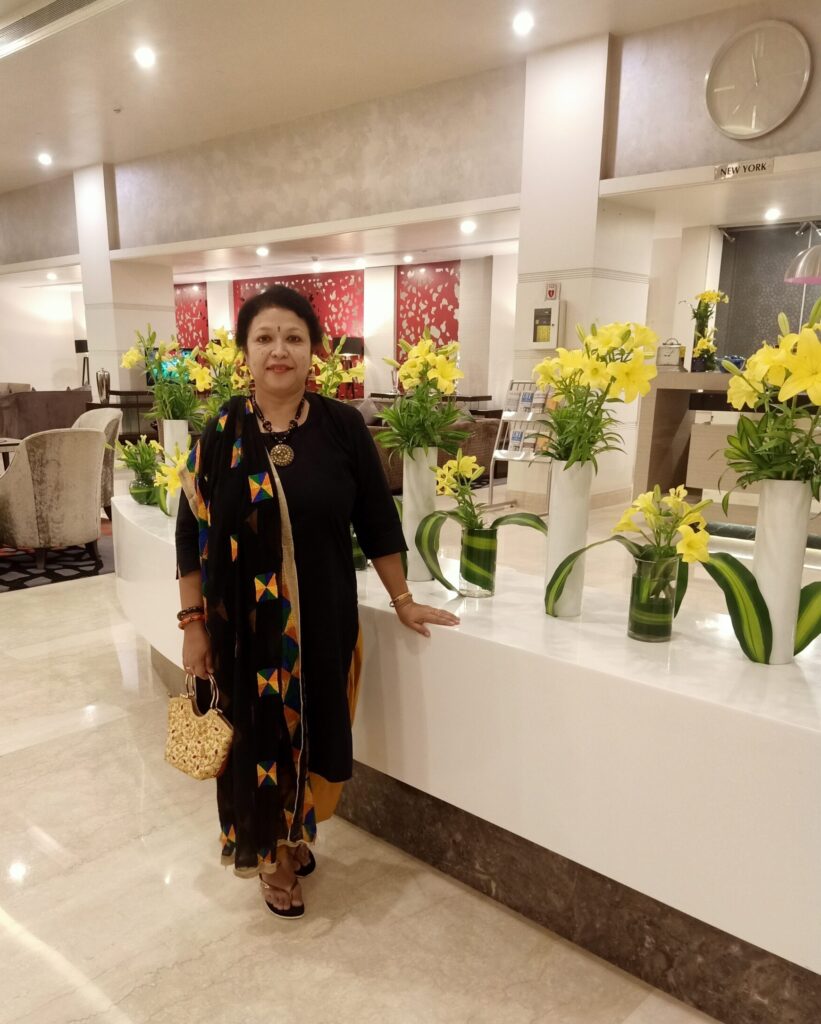Book: Stars from the Borderless Sea
Author: Dr Shalini Mullick
Genre: Romance
Publisher: Readomania
It’s the soul-stirring title and the haunting cover image that act as a magnet to draw readers towards this book. The whole idea of lives and emotions spilling out into an undefined infinity, the twinkling specks of light punctuating the black and blue expanses, and an esoteric quote by the inimitable Rumi, collectively urge the reader to pick up the book.
Dr Shalini Mullick’s debut offering, Stars from the Borderless Sea, comprises three romantic novellas – Sayonee, Humsafar, and Humraaz. The stories are disparate in most ways but connected by a common thread of deep-seated, perennial love. They are set in different parts of India and abroad – Delhi, Uttarakhand, Hyderabad, Calcutta and California – and explore the lives and loves of the three women protagonists – Geetika, Rachna and Mahima. All three are married women who, by a quirk of destiny, find their lives inextricably intertwined with those of the three men they love but are not married to. And herein lies the twist!
Geetika and Shekhar in Sayonee have been inseparable in college. Later, however, life takes them on very different trajectories where they continue to be intimate but only in spirit and soul. This story follows a quasi-epistolary form where the letters that Shekhar writes to his Geetu, act as the proverbial sutradhaar, apprising the reader of all the developments in their individual lives. Here, it is important to note that we read only Shekhar’s letters, not Geetika’s. This is an interesting and intelligent literary ploy that avoids mundane unfolding of events, and makes the narration crisp and taut. Also, the first-person narrative infuses the story with a warm, fuzzy feel that instinctively touches the reader’s heart. It’s their quiet, confident connect sans any expectations, that tugs at one’s heart. Among all the three stories, Sayonee with its star-crossed lovers, impacted me the most.
Humsafar, in comparison, sees the trio of Rachna, Rajat and Venkat enmeshed in an extraordinary situation where Rachna crosses a few boundaries to seek light and life amidst the abysmal darkness that defines her married life. The authentic settings and happenings of the medical world depicted here, clearly prove the author’s forte in this zone. This particular novella is an exercise in outlining layered, nuanced marital relationships, complete with their burgeoning passion and mush moments as a newly-wed couple, which later give way to anger, frustration and dissociation. The story imparts enduring life lessons to all couples in the art of letting go of all emotional baggage, prejudice and judgement, and moving ahead in love and harmony.
If resilience had a human face, it would have that of Mahima in Humraaz. Quiet and unassuming, diligent to a fault, but having nerves of steel, the story maps her meteoric rise from a naïve, underconfident accountant in the rickety Roxanne Industries to the CEO of Roxanne Pharmaceuticals, a pharma giant. Trapped in a cold, toxic relationship, Mahima is pleasantly surprised to find love peeking from an unexpected source, lighting up the dark nooks and crannies of her forlorn heart. Is she able to assimilate the love she thus finds? Does this unconventional relationship reach fruition? These are the questions that egg on the reader to devour the book.
Shalini Mullick is a pro when it comes to world building. Be it the royal grandeur of Geetika’s paternal and marital homes or the modern, user-friendly Californian apartment; the precise details of Shekhar’s disciplined ecosystem (including the typical décor and layout seen in military homes), the colourful garden in Rachna’s Delhi home, the lifeless ledgers and vouchers of Mahima’s office, the childish delight of ambling down Delhi’s eclectic hotspots, or the frenetic, time-bound clinical schedule of Rachna and Venkat – all show the writer’s penchant for authenticity and credibility.
The language used in all the three stories is free-flowing, conversational yet evocative. It is accentuated by expressions that immediately conjure strong and enduring images in our mind, eg. the shadows forming just outside the spill of the blue neon light, ‘turmeric-tinged pungent steam’, ‘shimmering solutions to her woes’, ‘a crushing pain constricting her chest…it rose like a tidal wave that would drown her’, ‘the permanent furrow on his forehead and the fatigue in his eyes were reminders that he was suppressing pain and sorrow’ and so many more!
All the three stories take the reader on a long, inward journey which is marked by moments of comfort and felicity but also long stretches of distress and dilemma. Most of the characters fight their own individual battle, each on a different turf. But in the process, they grow, learn, and evolve into better human beings who steer their lives in a wholesome direction. That the women characters steal the limelight here, goes without saying. But surprisingly, a couple of the menfolk also win our admiration. Shekhar with his quintessential ‘officer and a gentleman’ vibes, undeniably stole my heart! Venkat with his ever-dependable, helpful nature and his pools of unspoken love, follows close behind. Sanjay shines with his sheer patience, sensitivity, empathy and his commitment to his goal. Rajat surprises us by quelling the demons of his past that are threatening to ruin his present. Shalini has painstakingly fleshed out all the characters of her stories, including the secondary ones like Sania, Neena, Kailash and Mohit.
The element of silence plays a pivotal role in all these stories. Shalini has used silence as a leitmotif to portray various significant emotions, situations and events. For instance, the silence that cocoons Geetu and Shekhar time and again, in its warm embrace (“Each soaked in the other’s presence, finding solace in silence and their togetherness.”). Or the toxic silence hanging heavy between Pawan and Mahima, trapped in a loveless marriage. Venkat and Rachna, too, find joy in their unspoken, undefined closeness (“They had almost been kindred spirits in the hospital wards, working in silent synchrony…”). Fighting their inner turbulence, Sanjay and Mahima seek respite in their mutual quietude (“This was a different silence, a mix of stillness and anticipation. They would never know who came closer first.”). Hence silence, in this book, is curiously loud and pregnant, bursting into the reader’s consciousness and grabbing his attention!
Shalini has spun three stories of ‘love, longing and togetherness’ that are above and beyond socially ordained bonds. They are not the boxed-in versions of romance that we usually encounter. So, what gave her the courage to do so? Did she not fear judgement and societal sanction? Apparently not, by the author’s own admission. And we understand why. Through her deft storytelling, the protagonists manage to cast aside all fetters of conventional tags and expectations. They come across as vulnerable human beings, seeking comfort, intimacy and solace, like any one of us. They falter, they fight, they weather all storms and eventually return to their nest – stronger, wiser, happier! Their unwonted love, their selfless association, withstands the test of time and circumstances. With time, it becomes mellow and sublime but continues to illumine their lives. Their unrequited or unrealised love slices right through our heart, beyond all realms of ‘wrongdoing and rightdoing’ – and that is how the writer finds a direct connect with her readers!
Friends, do pick up the book to soak in a very different and soul- stirring expression of love!









